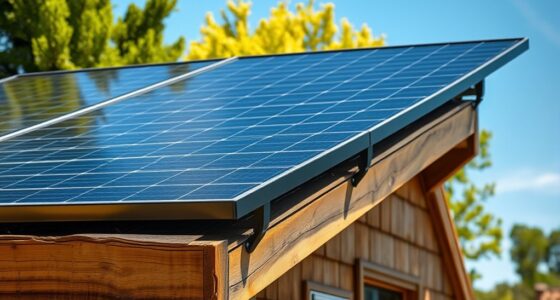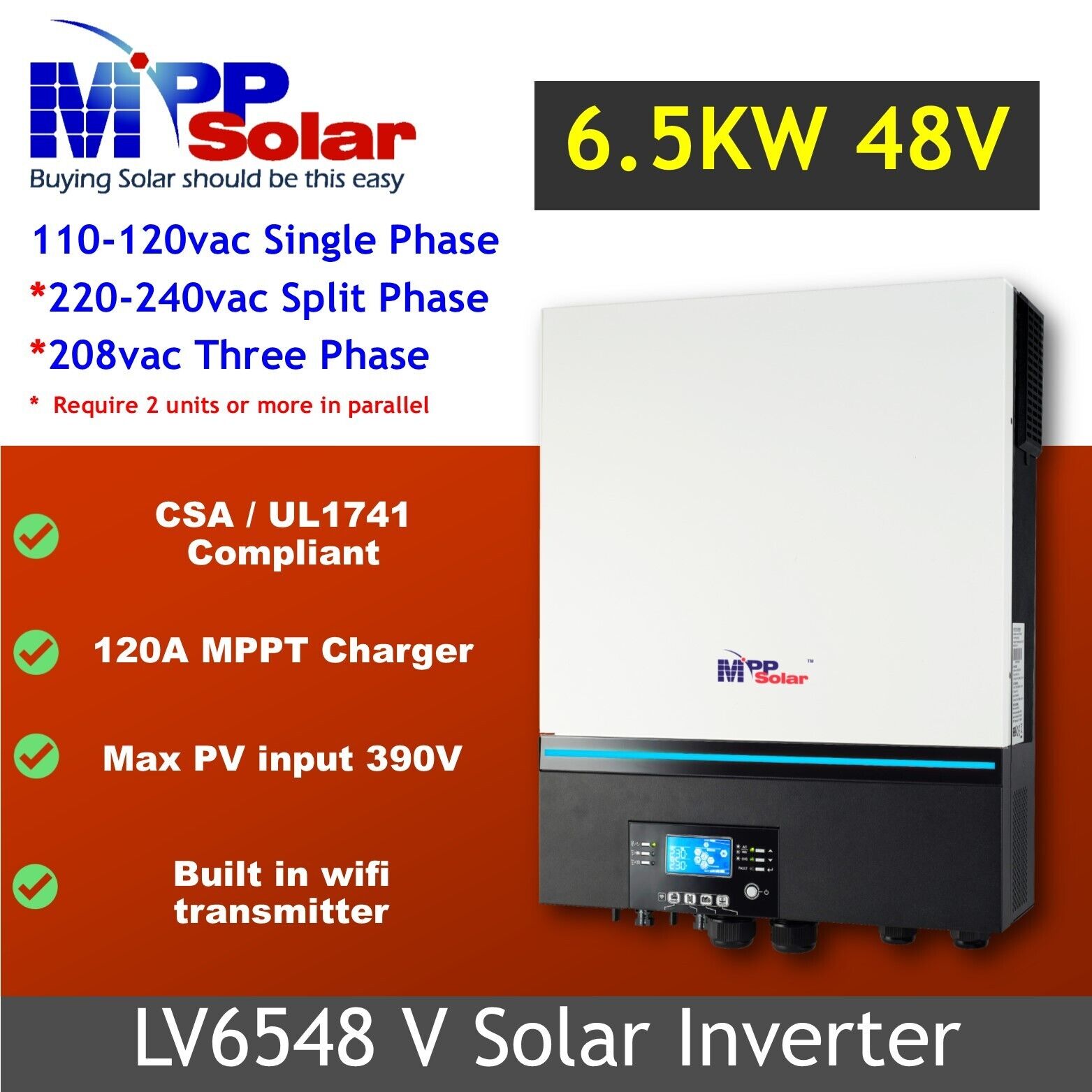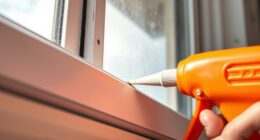Before deciding to install solar panels on your roof, it is crucial to consider various factors. These factors include cost, seasonal variations, geographic location, and overall expenses. It is recommended to tilt the panels five degrees more than the Equator tilt during the winter months. Conversely, a flatter angle is more advantageous during the summer months.
Latitude is a key factor in determining the optimal angle of a solar panel.
Solar panels should be angled according to your latitude in order to maximize the solar energy produced. The optimum angle depends on the sun’s movement during the day, which is different in winter and summer. To find the optimal angle, multiply your latitude by 0.9 and subtract 29 degrees during winter. An online calculator can be used to calculate the best angle for your solar panel.
If you are located in the northern hemisphere the optimal angle for solar panels would be towards south, magnetic or true. The optimal azimuth angle is approximately 20° from magnetic south. Depending on your latitude, you can leave one angle alone or adjust it several times a year to maximize solar exposure.
The optimal solar panel angle depends on your latitude and climate. A higher angle will allow the solar panel to absorb more sunlight and produce more energy. In a high latitude, a higher angle will produce better results during winter than during the summer. But this depends on a few factors, such as temperature.
Solar panel angle is determined by the sun’s path across sky. The sun is directly overhead above the equator. The angle will decrease the closer you are to the equator. It is important to remember that solar panel angles must be adjusted to account for this seasonality. For instance, if you live in an area with fog in the morning, you may want to angle your solar panel to maximize production during late afternoon.
Your latitude is another important factor that can affect the angle of your solar panel. Since the position of the sun changes throughout the year, it is important to keep in mind your latitude before installing a solar panel. For example, 40 degrees latitude will see the sun higher in summer than winter. During these seasons, solar panels should be tilted at an angle of 15 degrees in order to maximize the amount of solar energy they can receive.
Whether you want to install solar panels or not, you will need to understand that a solar panel’s tilt angle is a key factor in solar panel performance. The panel will produce the most energy if it is tilted at the maximum amount of sunlight. The ideal angle depends on your latitude.
If you want to install solar panels on your roof, you need to make sure they are angled at the right latitude. The best angle is one that is closest to your home’s latitude. In general, the angle should be between 30 and 45 degrees. However, this angle will vary slightly over the year. In summer, the solar panel angle should be 15 degrees lower than the latitude and 15 degrees higher than latitude in winter.
Your latitude is another factor that affects solar panel angle. Higher latitudes have higher sun angles and thus need a higher tilt angle than the lower latitudes.
Optimal tilt angle depends on season
The optimal tilt angle for solar panels depends on the season and where it is located. The winter tilt angle should not be higher than the summer. For example, if you live in Florida, you should tilt your panels at 45 degrees during the winter, and at 55 degrees during the summer.
To maximize energy production, optimal solar panel tilt angles must be achieved. The summer sun is higher than the winter sun, so the optimal tilt angle depends on the latitude of your location. A solar panel installed at a 40 degree latitude will generate a significant amount of energy year-round. Using the following formulas, you can determine the optimal solar panel tilt angle.
The optimal solar panel tilt angles can vary widely, but generally a steep angle between 60 and 45 degrees is best for winter production. Spring production requires a low angle of 20 degrees, while spring production requires a steep angle between 20 and 45 degrees. Summer production requires a steep angle between 45 and 60 degrees. The ideal solar panel tilt angle for northern climates varies depending on where you are located.
The solar panel’s latitude and the tilt angle will determine the optimal tilt angle. In the winter, snow and ice can accumulate on the panel and reduce its production. An angle higher will reduce accumulation. Similarly, it will limit soiling of the panel. Consequently, it will enhance your energy conversion.
The optimal tilt angle for March is 31 degrees. In December, it is 30 degrees. This angle yields an average of 4.33 kWh of energy per month. The optimal tilt angle in summer is smaller than it is in winter, but this matches real data.
The best time for solar panel installation is between 10am and 11am. It is between 8 and 9pm in winter. It depends on the season. You can calculate the optimal angle using a ruler, or a solar calculator online. Also, consider the time of day and the declination of sun. This will give you a good idea of when to tilt the panels.
Another factor that affects the optimal tilt angle for solar panels is the latitude of the property. The sun shines less in the south than the north, and northern regions get more sunlight. The optimal tilt angle will maximise the sunlight collected by the solar panels, and increase the energy produced.
The best tilt angle for solar panels depends on the season and where it is located. Solar panels should be oriented at least 10 degrees in a sunny location to maximize energy production. However, this angle should not be too high or too low, as this can cause the solar cells to burn out and become inefficient.
Solar panels are best placed facing south. Ideally, solar panels should face southward, as this will provide the most direct sunlight to them. If they face northward, they should be oriented at 30 degrees. If they are facing southward, they should be oriented at 32 or 33 degrees.
Optimal tilt angle depends on cost
When determining the optimal tilt angle for solar panels, you must consider the latitude of the installation site and the time of the year. It is important to understand the impact of these factors in order to get the best output from your PV modules. Here are some suggestions to help you determine the optimal tilt angle for your solar panel installation. However, remember that there is no one-size-fits-all ideal tilt angle for solar panels.
To calculate the optimal tilt angle for solar panel panels, subtract 15 degrees from your home’s latitude in winter and multiply that by five degrees in summer. This will result in an optimum tilt angle of about 49 degrees. To get better results, tilt your solar panels slightly if you live near a long horizon.
To maximize energy production, solar panels should be adjusted twice a year. Ideally, this should be done around September 15th and March 15th. In addition, adjusting the angle will decrease seasonal variations. A solar panel located at 40 degrees latitude will receive an energy boost of approximately 4 percent.
There are several factors that influence the optimal tilt angle of solar panels. The angle of the sun will have an impact on how much sunlight falls on the panels. The sun will shine lower in high latitude areas than it will in lower latitudes. This means that the weather and climate conditions in the area will determine the optimal tilt angle.
The optimum tilt angle of solar panels is determined by several equations. One such equation is Braun and Mitchell’s. In this equation, the optimum angle is defined as the tilt angle that will produce the highest energy output. The optimum tilt angle will also depend on the cost of the solar panel.
The ideal tilt angle for solar panels will vary with latitude. A solar panel will be more efficient if the angle is appropriate for the local weather conditions. However, solar panels can be installed at various angles, even on flat roofs. The panels’ total energy output should be compared to determine the best angle to maximize energy output.
The best tilt angle for solar panels is dependent on many factors, including the weather and where you live. Higher latitudes have a higher tilt angle than lower latitudes. In addition, a solar panel installed at a lower latitude will not be easily able to slide off snow. The amount of electricity produced can be decreased if the snow is not removed for a prolonged period.
A solar-tracker can optimize the tilt angle of your solar panels. This system requires maintenance and requires energy to operate. A solar-tracker can be expensive and requires retrofitting.
Hi, I’m Emma. I’m the Editor in Chief of Tiny House 43, a blog all about tiny houses. While tree houses are often associated with childhood, they can be the perfect adult retreat. They offer a cozy space to relax and unwind, surrounded by nature. And since they’re typically built on stilts or raised platforms, they offer stunning views that traditional homes simply can’t match. If you’re looking for a unique and romantic getaway, a tree house tiny house might just be the perfect option.










